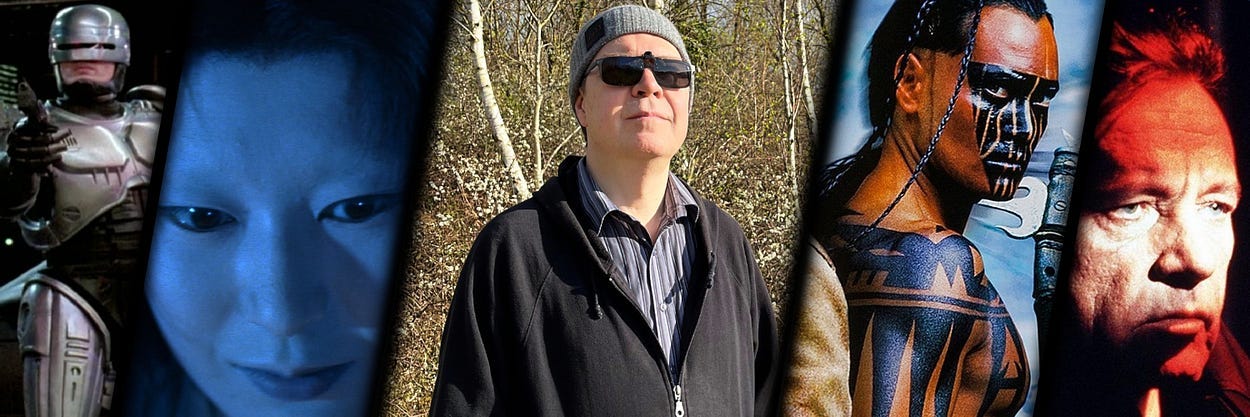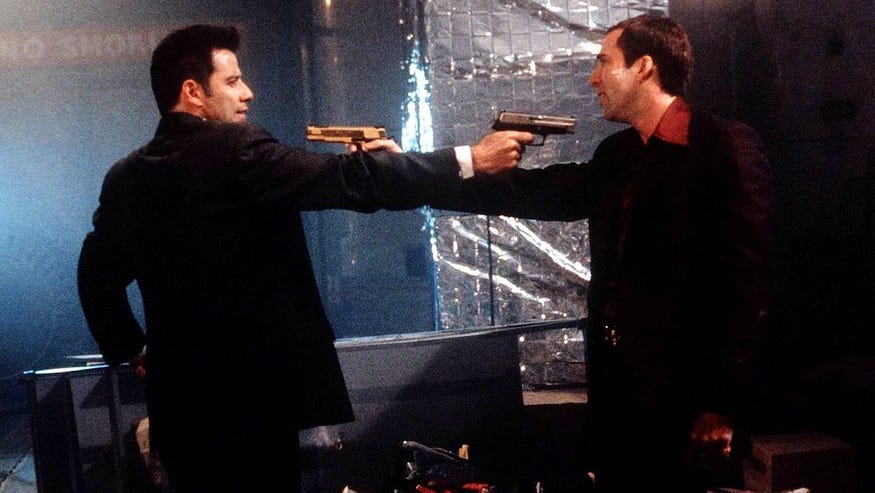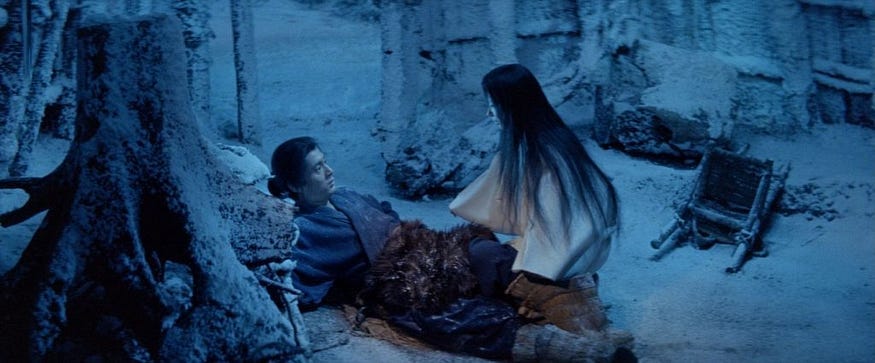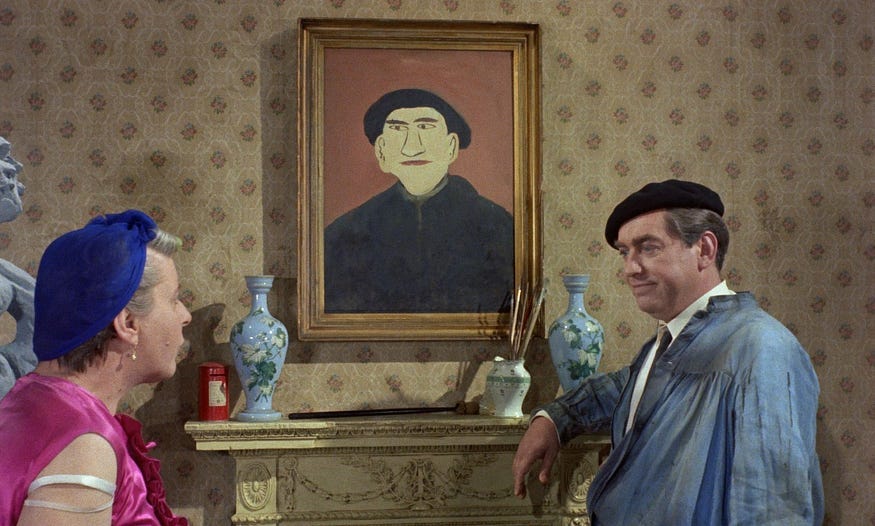10 Years of Frame Rated: Remy Dean Reminisces
One of the site’s longest-serving writers looks back at a decade of contributing work…
Back in 2015, I was teaching A-level Media Studies at college and one of our set texts was Doctor Who’s “Deep Breath”, the first story for the Twelfth Doctor, Peter Capaldi. We’d studied the series in previous years, and I’d directed the more able students to Frank Collins’ book The Pandorica Opens for its exemplar analytical approach. “Deep Breath” was too new to be covered in any books, but a quick search found a review published in a new online film and television review journal called Frame Rated. What’s more, it was penned by none other than Frank Collins, who also happens to be a good friend I’d known since school days when we’d worked on fanzines together. At the time, I was editing a literary journal, part-funded by the Arts Council of Wales and, by way of a long-overdue catch-up, I interviewed Frank about his writer’s life and his approach to reviewing and analysing television.
Before I took up teaching, I was Assistant Editor for Media Content on London’s Outlook magazine and our chat rekindled my enthusiasm for writing reviews. So, I pitched some ideas to Dan Owen, Frame Rated’s editor and head writer. The first to pass muster was a retrospective review of John Woo’s Hollywood breakthrough, . That was published in 2017, shortly after Frame Rated ‘s 2nd anniversary. It really doesn’t feel that long ago, and I can still clearly recall Dan’s excellent advice to me on reading a first draft, “use better words.” To this day, I will go over a piece of writing and consider if a change of words could improve clarity, evoke emotions in the reader, or simply make a sentence more interesting.
In my first year with Frame Rated I covered some choice titles so it’s hard to select a favourite review, but my RoboCop (1987) retrospective would be in the running, and my first review for 2018 was one of my favourite films, too, The Private Life of Sherlock Holmes (1970), which had been given an excellent Blu-ray restoration and extras package. Both films have strong associations with times in my life. I didn’t see The Private Life of Sherlock Holmes in the cinema as I would’ve been about five years old, but I can recall watching it on the telly with my family and discussing its plot with my elder brother as we tried to crack the case ahead of the famous sleuth. I was also happy with the chance to revisit The Medusa Touch (1978), a film very much of its time and another touchstone that takes me back to my formative years. It certainly left an indelible impression on me, which I touch upon in my extended retrospective for Frame Rated.
This is why I love films and television, which have an unparalleled ability to anchor memories of people, places and periods in a way that goes beyond simple nostalgia. Thing is, one may not realise how important what’s being watched is, until many years later when a rewatch may connect with profound memories. Sometimes these associated memories will involve those who can never be visited ever again — and I mean both people and places. So, it’s very cool that Frame Rated has grown into a rich repository of reminiscences from varied voices. I feel privileged to join the chorus and am looking forward to seeing how Frame Rated continues to grow over the next decade. I hope to stick along for the ride.
This month, the number of reviews I’ve contributed to Frame Rated will pass 230 and they’re all here for anyone interested to revisit… so, I won’t try to select the ones I feel are “my best”. Instead, I’ll content myself with drawing this little stroll down a back alley off memory lane to a close by picking just one review per year that really resonated with me, bringing us up to the present…
The physical media highlight of 2020 was, without a doubt, the beautifully restored Blu-ray of Masaki Kobayashi’s Kwaidan (1964). I had fallen in love the idea of the film back at film school in the early 1980s when I’d come across black and white stills in books on the history of fantasy films and Asian cinema. It would be one of my grails for decades so in some ways I approached it with trepidation. I wanted it to live up to the mythos I’d created around it in my mind. Thankfully, it did and now tops my list of ‘Best Films Ever’… depending what day you ask me. I can think of no film more beautiful. Plus, it overlaps into one of my other main areas of interest, folklore, being an adaptation of four strange and truly haunting ghost stories, collected in 19th-century Japan by the great cultural commentator Lafcadio Hearn.
Another movie that vies for the top slot as my favourite film was ripe for a retrospective in 2021 as it turned 40 years old and once again it leans heavily into folklore — there seems to be a pattern here. I watched John Boorman’s Excalibur (1981) many times back in the days of VHS home media. It was how I made new friends. Not only that, I discovered extreme metal bad Anaal Nathrakh as a long result.
There were some great physical media releases through 2022, and I was particularly pleased to receive a preview screener for To Sleep So as to Dream (1986). It was never given any prior international distribution, so hadn’t really featured on my radar. I tend to look back to before the 1980s for the classics of Japan’s cinema but, what a discovery this was. A love letter to the cinematic heritage of Japan wrapped up in a noirish sleuth story that takes the viewer into a beautiful hinterland between history and fantasy… on both sides of the screen.
One of the highlights of my tenure came along in 2023 when I had the privilege of interviewing one of my heroes, who sometimes plays a villain, Mark Dacascos. At the time, we were working though a rewatch of Marvel’s Agents of S.H.I.E.L.D and had reached the season featuring him as the recurring telekinetic bad guy, Giyera. But what he and me were excited to chat about was his memories of making Brotherhood of the Wolf (2001) which had just been restored and released as a director’s cut, supervised by Christophe Gans. Although it’s another that I may rank as ‘best films ever’, I had never seen the full uncut version. What a treat that double that whammy was: getting to review one of the most audacious martial arts, period drama, horror movies ever made plus talking with its amazing star who turned out to be a real gent. Writing for Frame Rated certainly has benefits.
For me, the physical release of 2024 was The Outcasts (1982) which I could recall almost shot-for-shot having seen it only once, 40 years earlier. It had since been without a distributor despite its folk horror cult credentials of being written and directed by Robert Wynne-Simmons who also wrote what many see as the progenitor of the genre, The Blood on Satan’s Claw (1971). The British Film Institute (BFI) did a marvellous job of restoring the director’s cut with great sensitivity, retaining the gorgeous painterly texture achieved by the experimental filming with 16mm before being transferred up to 35mm. Rewatching still enchanted and transported me to the realm of darkly haunting fairytales.
Early on in 2025 I leapt at the chance of reviewing a lovely, cleaned-up print of The Rebel (1961) a veritable classic of British comedy starring the innovative and inimitable Tony Hancock. It’s another movie that has been with me a very long while, since I first saw it on a black-and-white Rediffusion set in my student digs. I was studying Art and Design and The Rebel provided a better overview of 20th-century art than any of the lectures ever did.
… which brings us up to date as Frame Rated celebrates its 10th anniversary and confirms that film and television can become an integral part of our lives, often anchored in times gone by and often associated with unique personal memories… some pleasing, some poignant.
Here’s to building more memories over the next decade and beyond. I know there will be many happy returns.
Originally published at https://www.framerated.co.uk on June 29, 2025. All images are used according to the Fair Use doctrine in US & UK law for review, commentary, and education.












